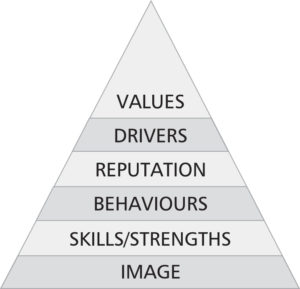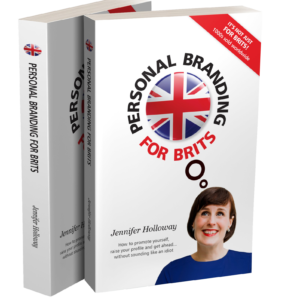

Personal Brand 101 – Part 3
Welcome back to Personal Branding 101. We started with Part 1, setting out a top-line definition of what makes a personal brand, while Part 2 began to delve deeper by looking at Values and Drivers. Now we’re onto Part 3, looking at the next two elements of the Personal Brand Pyramid: Reputation and Behaviours.

REPUTATION
What it is
Jeff Bezos is the founder of Amazon and he’s oft-quoted as saying, “Your brand is what people say about you when you’re not in the room”. (I know he’s oft-quoted because I often quote him.) What he’s describing is your Reputation and, to some extent, it’s out of your hands – after all, it’s up to other people to decide what they say in your absence. But here’s why it’s included in the six elements of the Pyramid:
You can’t dictate what people say about you but you can
influence what they think of you.
In order to do that, it’s important to work out what you want your Reputation to be (hence it being part of the Pyramid) so you can take steps to convey that whenever people come into contact with you. If you don’t, you leave your Reputation firmly in the hands of others.
What to ask yourself to identify it
- What am I known for?
- What comment is added when my name is mentioned?
- What do I want people to say about me when I’m not in the room?
Examples of Reputations
IMPORTANT: Your Reputation should build on and/or reflect another aspect of your personal brand, as shown with these examples.
- Tells it like it is for the good of the team [this builds on a Behaviour and possibly a Value]
- Always delivers ahead of time and under budget [this builds on a Skill/Strength]
- Stands up for the little guy [this builds on a Driver and possibly a Value]
- Respectful of others’ views [this builds on a Value]
- The calmest person in a crisis [this builds on a Behaviour]
Here’s a top tip
One way to consider what you want people saying when you’re not in the room is to think about someone in business who knows you well and whose views and opinions you respect and value. (Note I said ‘in business’ – so not your mum.) Then imagine a complete stranger calling them up to ask:
“Out of all the things you can tell me about [your name], tell me just one.”
What would it matter most to you to be top of the list?
It’s a good way to focus your mind – and focus is exactly what’s needed, because whatever Reputation you decide to put into your Personal Brand Pyramid, it has to be clear and concise.
For example, I once received a Personal Brand Pyramid that had been completed by a delegate following one of my workshops. Under Reputation the statement read: I’m known for doing the right thing and for being a leader of our behaviours. I’m calm under pressure and supportive of my team. I’m a lover of numbers and analytical approaches.
By my count, that’s six different things they want their Reputation to be. My advice was to focus on one, or a maximum of two if it they tied together neatly, to make it quicker and easier to convey when interacting with others.
BEHAVIOURS
What they are
Behaviours are the words (usually adjectives) you’d use to describe your personality and character – very much the ‘who’ part of your personal brand. They’re often linked to your Values, in that how you behave is an outward reflection of the direction your moral compass points. They’re also linked to your Image, in that they come over in how you act (but we’ll get to that in Part 4).
What to ask yourself to identify them
- What words would you use to describe your personality?
- How would you describe how you act around others?
- If you only had three words to describe yourself, what would they be? [Again, this is good for focusing your thinking.]
Examples of Behaviours
- Energetic
- Down-to-earth
- Open-minded
- Forthright
- Introspective
- Dynamic
- Resilient
- Composed
Here’s a top tip
Whatever words you come up with to describe your Behaviours, it’s always a good idea to check whether your definition of what they mean matches others’.
I had a client once who described herself as “energetic”. I had to staunch the look of surprise on my face, because if there was one thing this lady wasn’t, it was energetic. That’s because, when I think of someone with an energetic brand, I think of them talking quickly, with wide tonal range in their voice, having an animated face and using lots of hand gestures – all the things she didn’t do.
However, once we dug deeper into what ‘energetic’ meant to her, we discovered the energy she had was in her brain ie mental energy, as opposed to the more common physical energy. Simply adding the word ‘mental’ in front made the choice of Behaviour a much better fit.
So there you have it – the second two elements of the Personal Brand Pyramid explained. In Part 4, we’ll look at Skills/Strengths and Image. (I bet you’re licking your lips in anticipation, eh?) And once again, if I’ve not managed to overcome the Curse of Knowledge and you’re still a little unclear what’s what, feel free to ask a question using the comment box below.








Personal branding is a practice of how people market themselves and their profession as a brand. A brand is an image you establish in the mind of everyone. It’s the impression that someone will get from you. You must discover ways to identify your personal brand, how to show it and the way to control it. Personal branding is an essential quality someone should have because the image that we build in our customer’s mind or to a company is the key to our success. All of the elements discussed in this site are significant to successfully build a good image for a customer or a company.